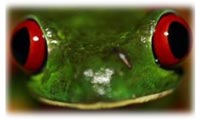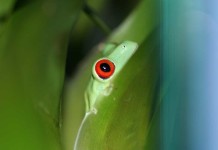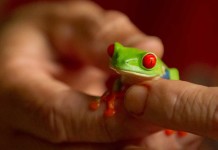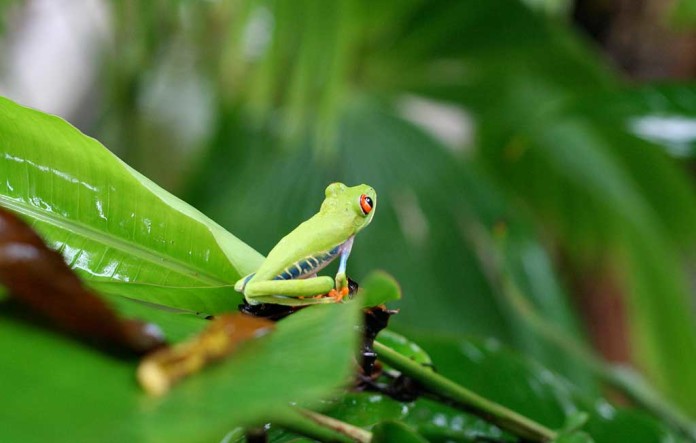The Chyrtrid Fungus affects many species of frogs, including the red eyed tree frog. This is only one red eyed tree frog fungal disease but it is a serious threat to the population of this species. The chytrid fungus attacks the frog’s skin and then moves internal, affecting the nervous system. The red eyed tree frog will show various symptoms that will enable you to diagnose the disease.
The Beginning
The chytrid fungus was discovered in 1939 in Queensland, Australia. The disease is found also in Africa, North and South America, Europe, New Zealand and Oceania. It is suspected that the disease has been present in Australia since 1978.
Symptoms
This red eyed tree frog fungal disease has various symptoms that enable one to detect the disease, which may have been contracted by the frog if you purchased it from an organization that captures frogs in the wild instead of raising them in captivity.
The symptoms include:
- Discoloration of the skin; reddish color.
- Peeling of the outside layers of skin.
- Roughness of the skin in conjunction with peeling.
- Will not hide; will stay in the open even during the day.
- Loss of appetite.
- Lethargic, very sluggish. Will not move around much.
- Hind legs will be spread, instead of hugging body.
- Frog will be unable to right itself.
- Seizures.
- Thickening skin.
If you notice any of these symptoms, contact a veterinarian that specializes in amphibians. This disease is often fatal but if caught soon enough, treatment may be successful in stopping it.
Transmission and Prevention
 The disease is transmitted through anything that carries water, such as other frogs moving about in the environment, contaminated tadpoles or other animals and exposure to infected water supplies. Tadpoles are carriers of the disease and during their maturity, the chytrid spores move to the skin.
The disease is transmitted through anything that carries water, such as other frogs moving about in the environment, contaminated tadpoles or other animals and exposure to infected water supplies. Tadpoles are carriers of the disease and during their maturity, the chytrid spores move to the skin.
If your pet red eyed tree frog or one that you encounter should die from the disease, do not touch the frog directly. Use gloves when you handle the frog and anything in its habitat. If you should actually visit an area where frogs live, wash your shoes to prevent the spread of the disease from one area to another.
The most alarming red eyed tree frog fungal disease is chytrid, which affects many other species of frog as well. When you notice your frog with any of the symptoms, notify your veterinarian immediately. If you have more than one frog, keep the ill frog in quarantine. Take precautions and purchase only those red eyed tree frogs raised in captivity to prevent the spread of the disease.













